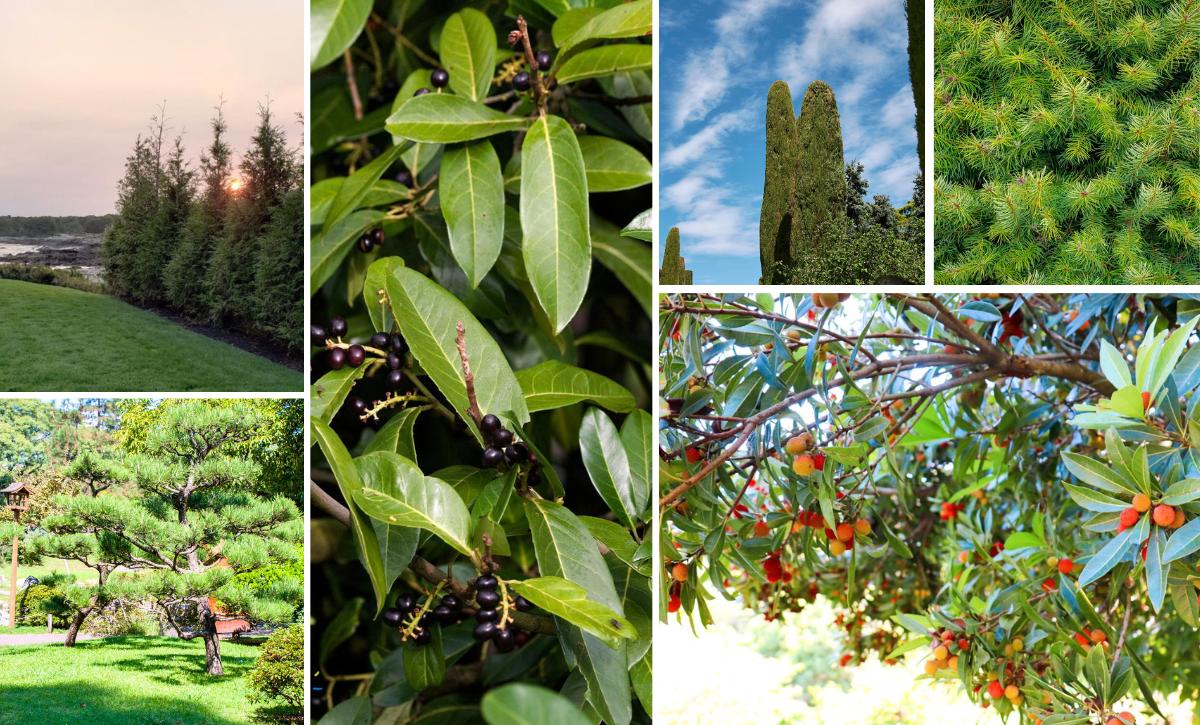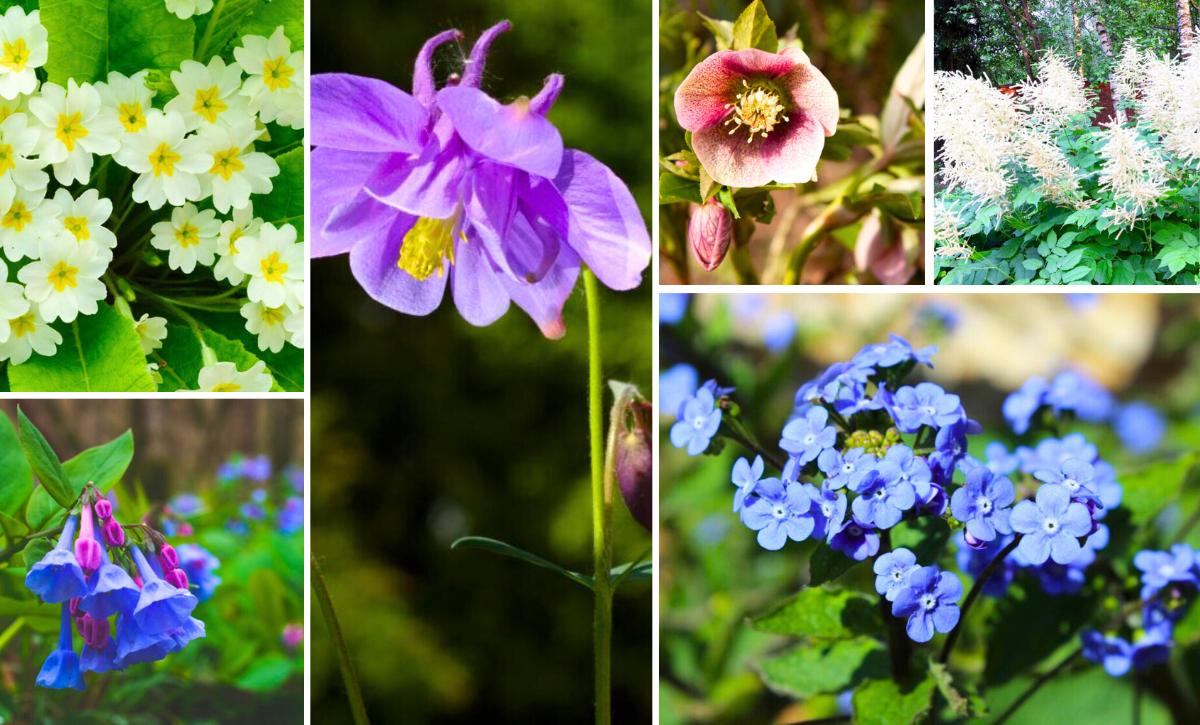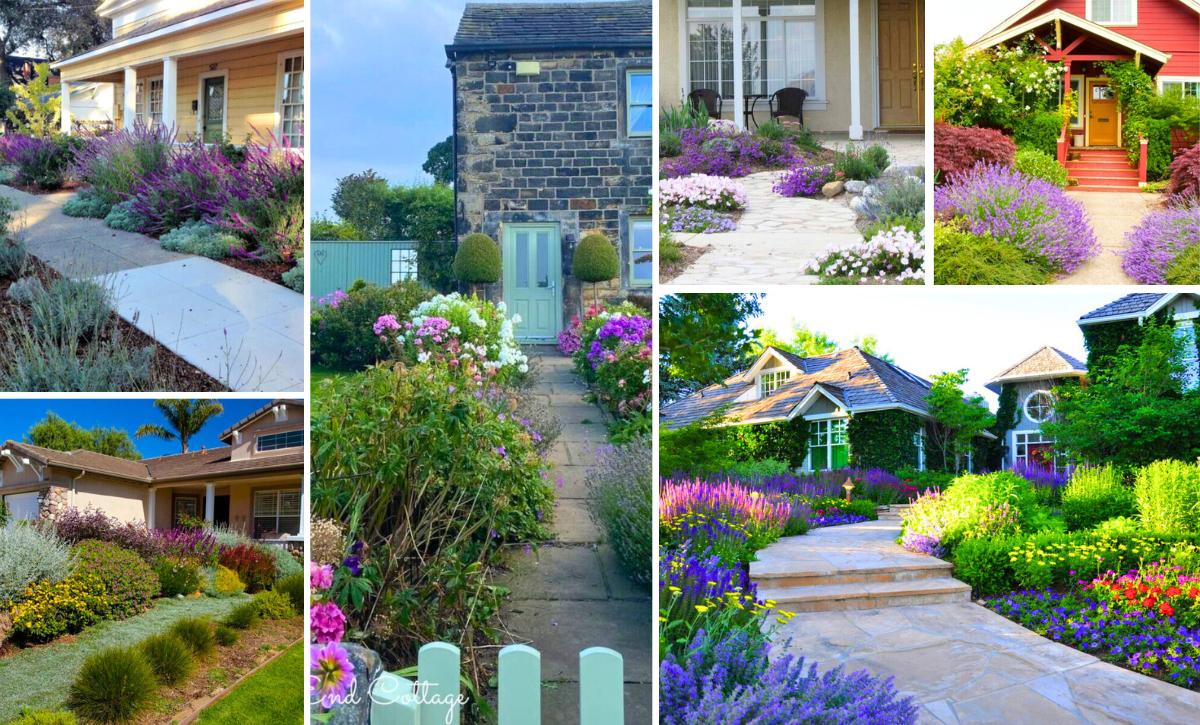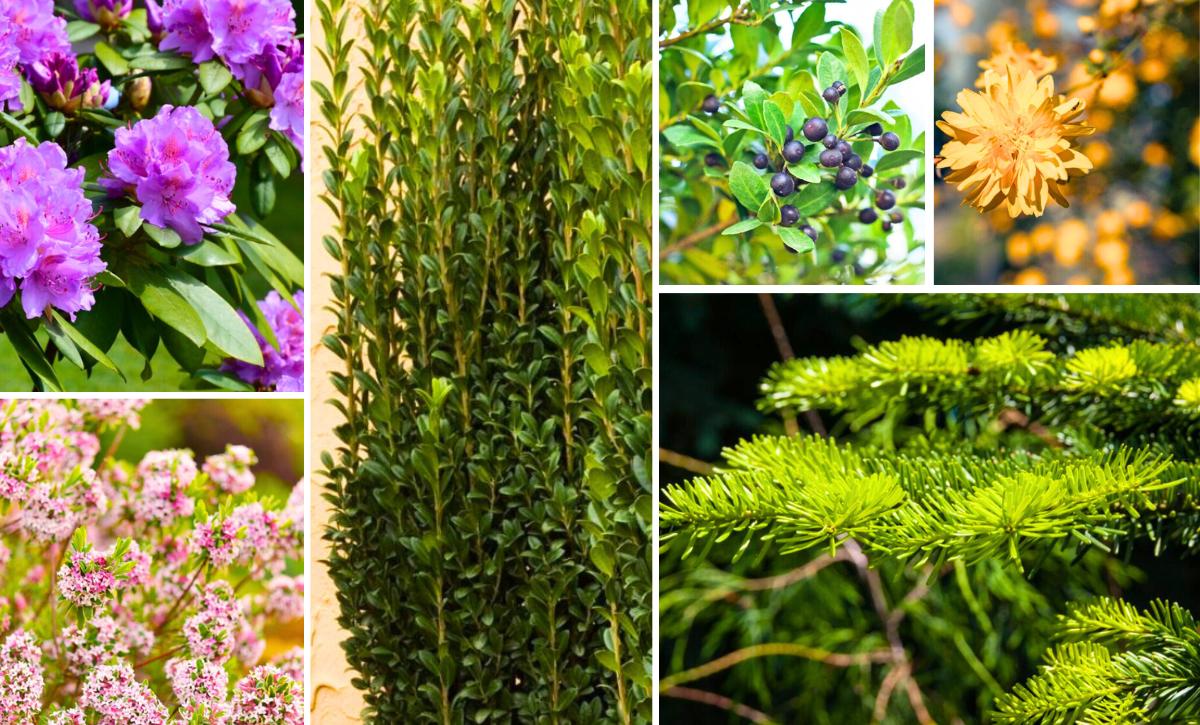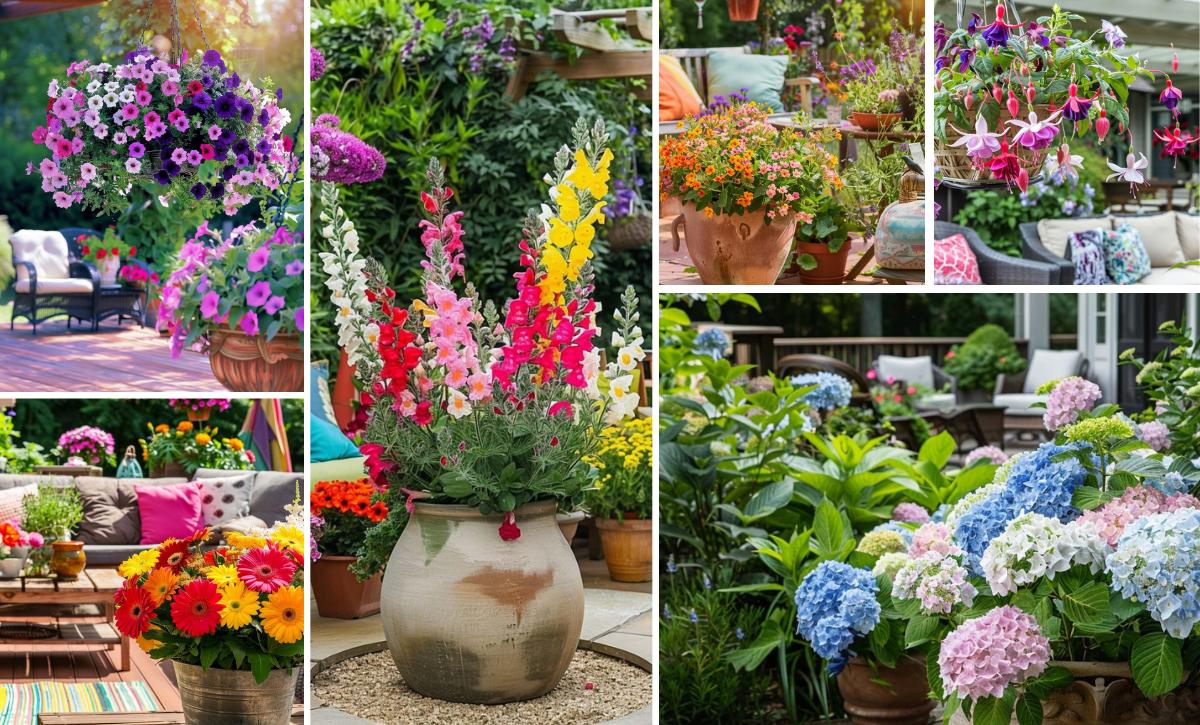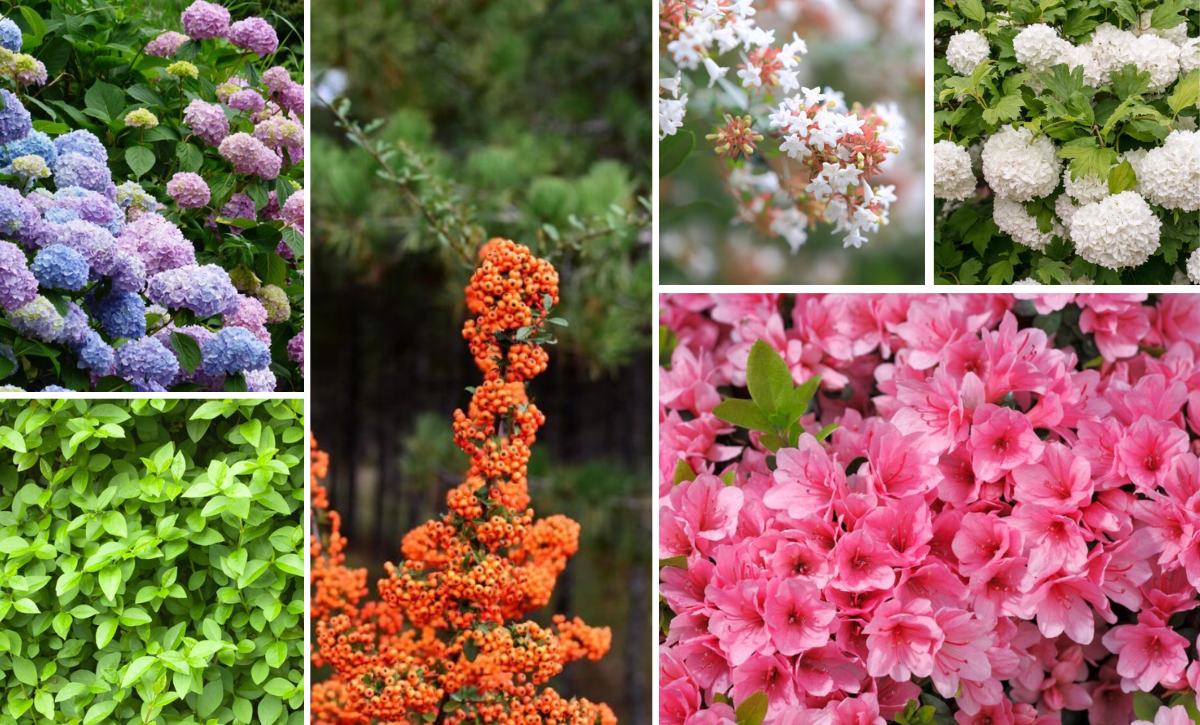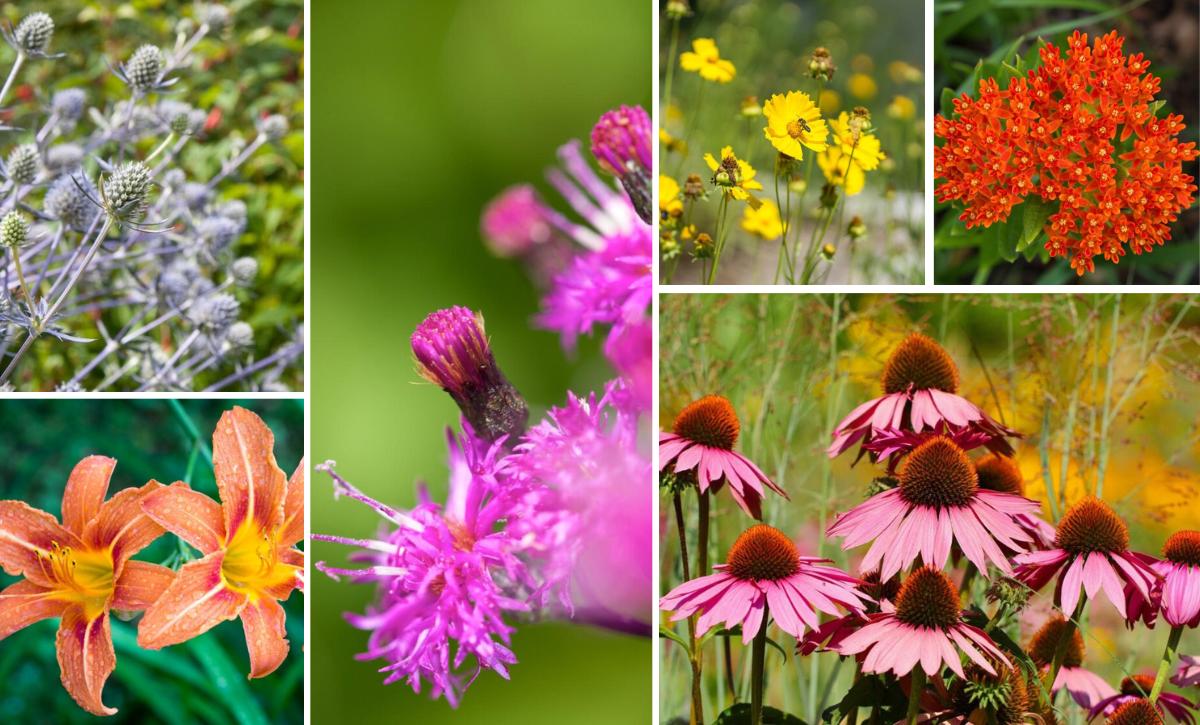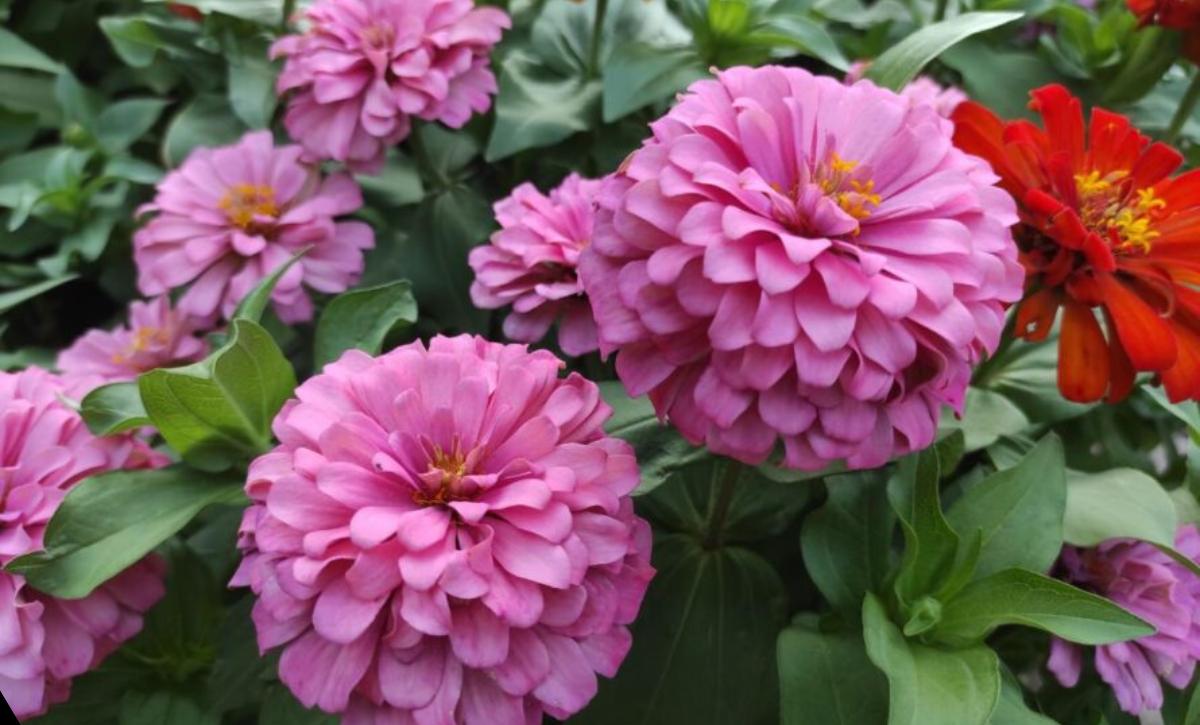Big, beautiful blooms are the perfect way to add a “wow” factor to your garden.
Whether you have a tiny flower bed or an enormous English garden, these oversized flowers bring color and life.
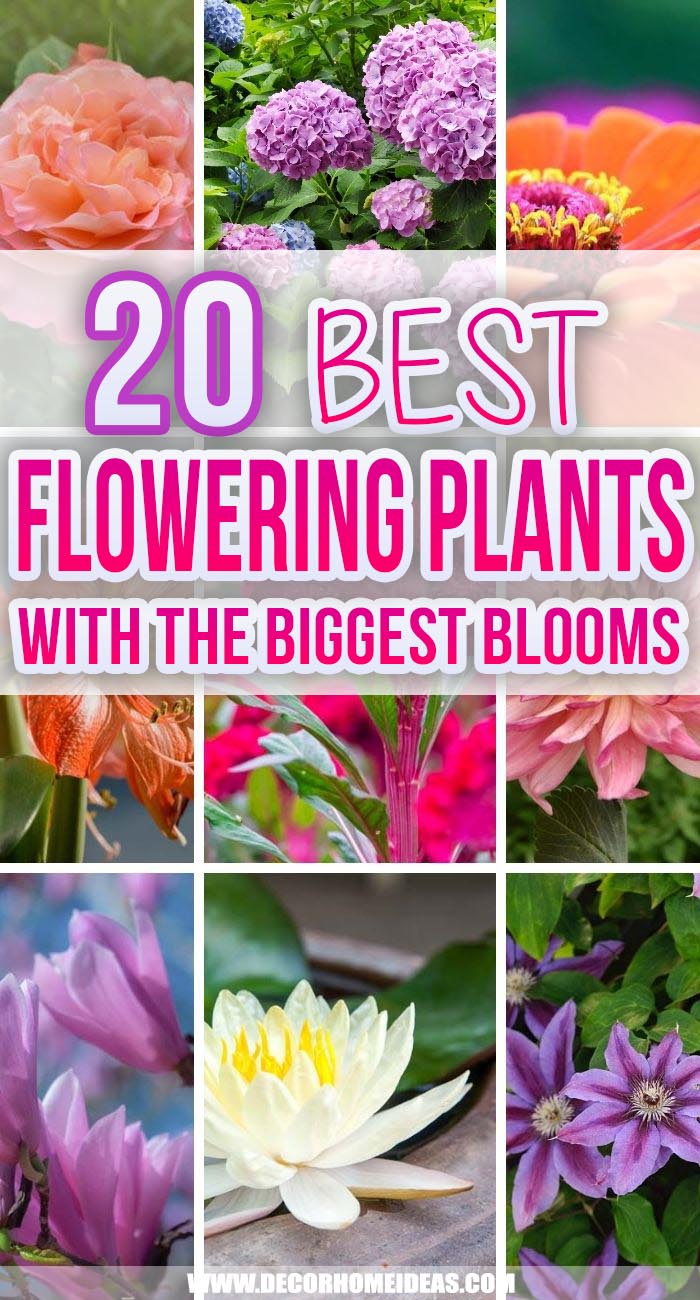
As you plan a planting schedule, check out our picks for the best flowering plants with the biggest blooms to find the right fit for your soil and growing zone.
1. Allium ( Allium )
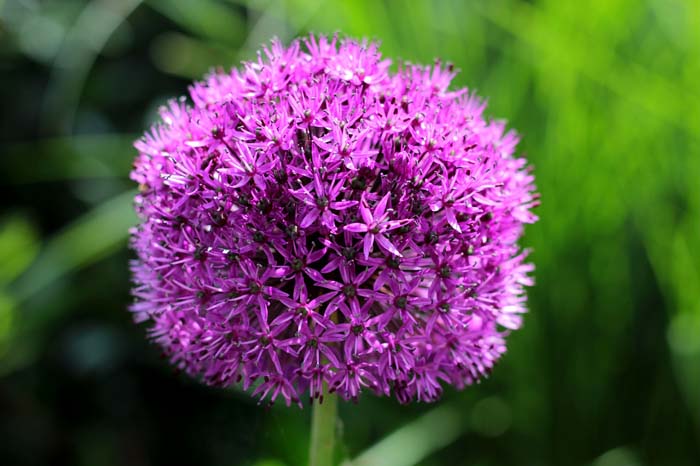
It’s impossible not to fall in love with the beautiful allium — every year, around the middle of the spring season, it forms huge, globe-shaped clusters of flowers.
Each tiny flower features delicate petals with distinct centers.
Plus, since the plants are relatively hardy, you can grow them in a wide range of soil types with ease.
- USDA Growing Zones: 5 to 8
- Color Varieties: Purple
- Sun Exposure: Full Sun
- Soil Needs: Friable, evenly moist, and well-drained
2. Amaryllis (Hippeastrum group)
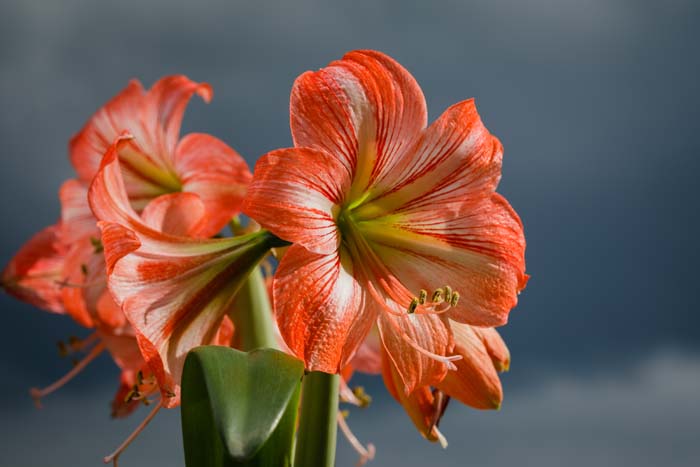
The amaryllis flower is known for its romantic, vintage look.
It grows with multiple layers of overlapping petals, each with delicate, ruffled edges.
The trick to getting the biggest amaryllis flowers is to choose the largest bulbs you can find; in the spring, you’ll be delighted by the enormous, colorful blooms that appear in small clusters.
- USDA Growing Zones: 8 to 10; normally planted as an annual, even in warm climates, since a winter chilling period is required
- Color Varieties: Red, pink or white
- Sun Exposure: Full sun to part shade
- Soil Needs: Humusy, well-drained potting soil; rich, well-drained soil when planted in the garden
3. Angel’s Trumpet ( Brugmansia )
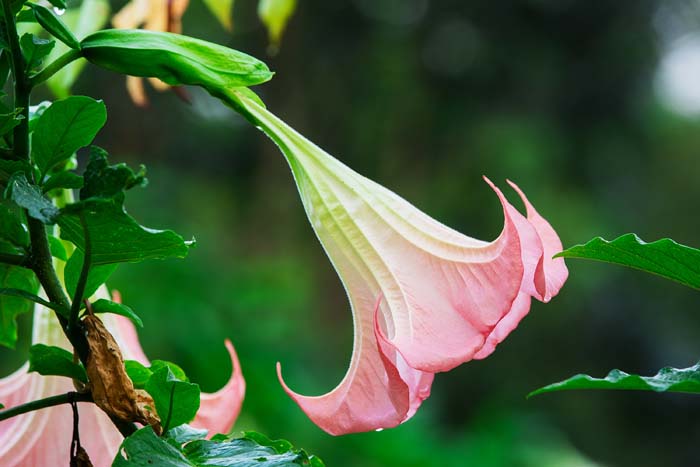
Are you working with a small amount of space?
You can still enjoy big, beautiful flowers with the container-friendly angel’s trumpet. These flowers drape over the edge of the container, creating a ceiling of color on your porch or patio.
Make sure to leave lots of room for each plant, as the flowers can grow up to 10 inches across and a thrilling 1.5 feet long.
- USDA Growing Zones: 8 to 10
- Color Varieties: White, Yellow, Pink
- Sun Exposure: Ful sun
- Soil Needs: Moist but well-drained
4. Atlas Magnolia ( Magnolia Atlas )
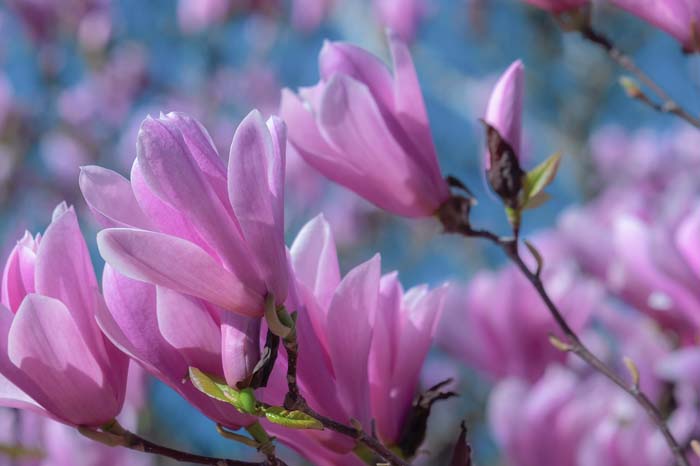
If you’ve ever traveled in the South during magnolia season, you’re familiar with the sweet scent and bright color.
Take this gorgeous flower to the next level with the Atlas magnolia, which creates jumbo blooms that are more than 1 foot wide.
Since this plant takes up a great deal of space, it requires a large yard or garden.
- USDA Growing Zones: 6 to 10
- Color Varieties: White, Pink
- Sun Exposure: Ful sun to part shade
- Soil Needs: Moist but well-drained
5. Butterfly Bush (Buddleja davidii)
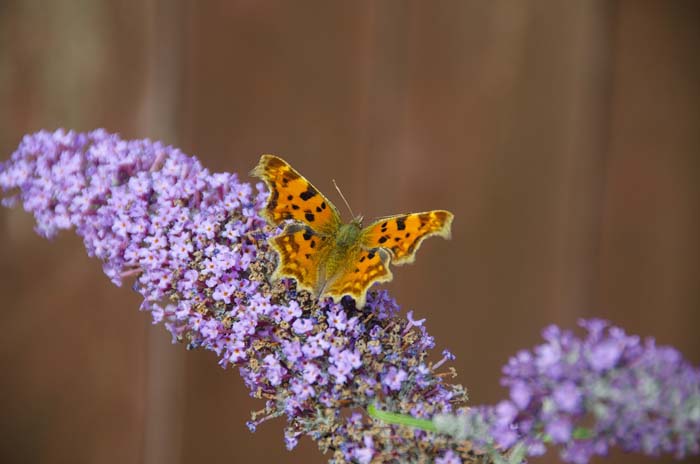
When you want to attract butterflies to your garden, the aptly named butterfly bush is a lovely choice.
Come spring, the plants start to grow tiny flowers along large spikes called “panicles”. Usually reaching lengths of 12-18 inches, these spectacular spikes contrast beautifully with your more traditional, romantic blooms.
The flowering period lasts for months, so your garden buzzes with color and life well into the summer.
- USDA Growing Zones: 5 to 9
- Color Varieties: Purple; pink, yellow, and red cultivars are also available
- Sun Exposure: Ful sun
- Soil Needs: Average, well-drained soil
6. Camellia (Camellia spp.)
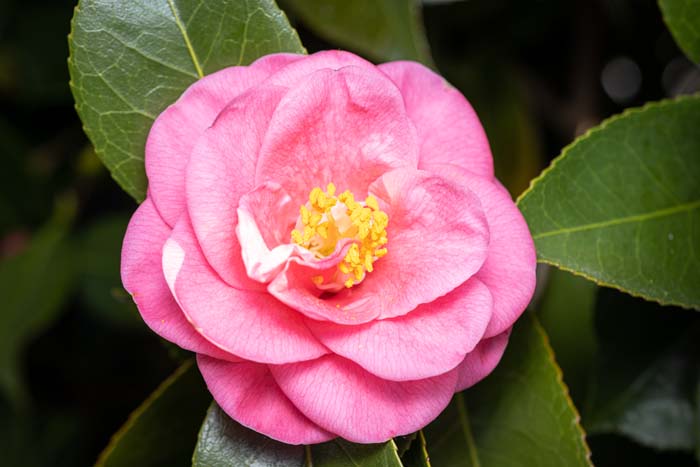
The impossibly lovely camellia requires specific growing conditions, but if you meet them, the reward is well worth the labor.
When the bushes start to bloom, your yard comes alive with huge blooms.
With their well-defined petals and colorful centers, these stunning flowers are picture-perfect.
- USDA Growing Zones: 7 to 9
- Color Varieties: White, pink, red, yellow, lavender
- Sun Exposure: Part shade
- Soil Needs: Moist, acidic, well-drained soil
7. Cockscomb (Celosia argentea var. cristata)
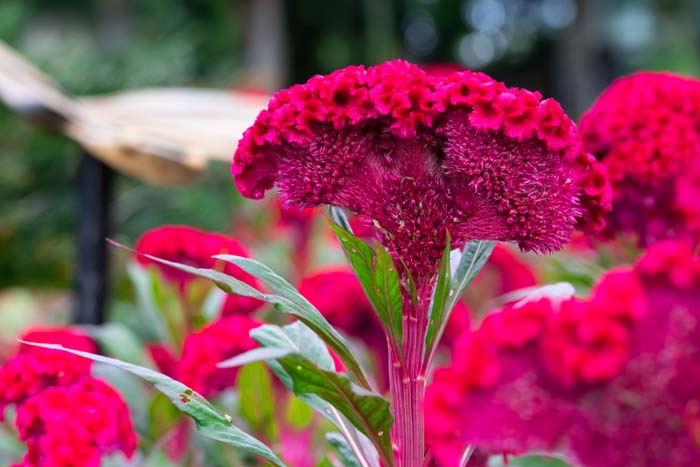
Are you looking for something different to bring variety to the garden?
The stunning cockscomb is a perfect choice. As the flowers grow to their full 12-inch size, they resemble a vibrant coral reef.
They tolerate a range of growing conditions and climates.
- USDA Growing Zones: 2 to 11; normally grown as an annual
- Color Varieties: Orange, red, purple, yellow, pink
- Sun Exposure: Full sun
- Soil Needs: Rich, moist, well-drained soil; tolerates dry soil
8. Common Sunflower (Helianthus annuus)
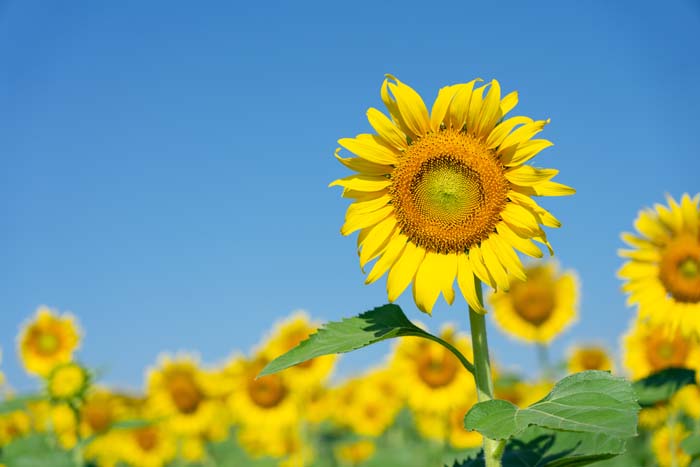
If there’s one flower that always makes you smile, it’s the sunflower.
Don’t let the word “common” fool you — this stunning, bright-yellow plant is anything but ordinary.
If you water and fertilize regularly, it’s relatively easy to get a crop of 10-inch blooms.
Make sure to pick the right variety for your space, as some types can reach 15 feet tall or higher.
- USDA Growing Zones: NA; these are true annuals in all climates
- Color Varieties: Yellow (browns and burgundies also available)
- Sun Exposure: Full sun
- Soil Needs: Well-drained soil rich in nutrients
9. Dinner-plate Dahlia (Dahlia hybrids)
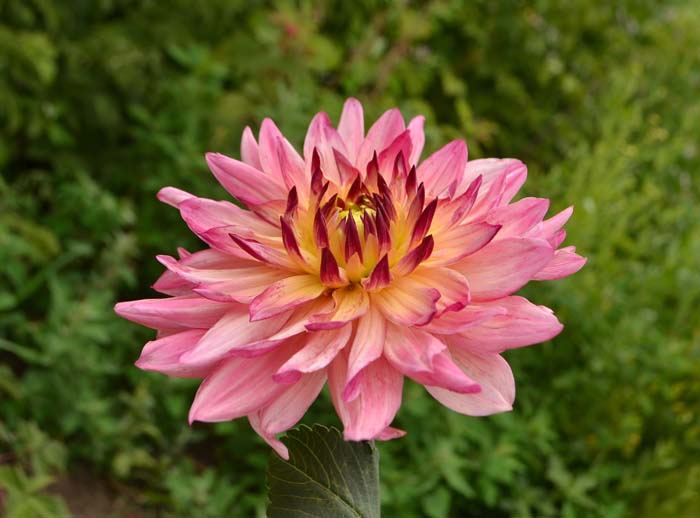
As the name suggests, the dinner-plate dahlia can grow to the size of a large plate.
The size is only part of the fun — since dahlias have many layers of petals, they’re a show-stopping addition to your outdoor space.
Choose varieties in a range of colors; some are even cultivated to feature multiple tones in a single flower.
- USDA Growing Zones: 8 to 11; often grown as an annual
- Color Varieties: White, pink, red, yellow, orange, purple, bi-colors
- Sun Exposure: Full sun (some afternoon shade helps in very warm climates)
- Soil Needs: Rich, well-draining soil
10. English Rose (Rosa hybrids)
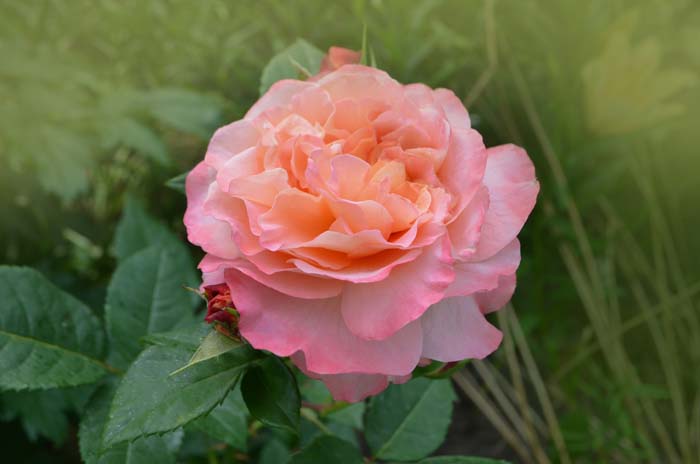
The English rose takes romance to the next level — the huge blooms and dense, overlapping petals blend vintage and contemporary garden style.
You’ll want to lean in close to take in the sweet, strong fragrance; it turns your yard into a true outdoor oasis.
With a range of color options, it’s easy to find a shade that complements the exterior of your home.
- USDA Growing Zones: 4 to 11 (varies, depending on variety)
- Color Varieties: White, yellow, red, pink, orange, and bi-colors
- Sun Exposure: Full sun
- Soil Needs: Well-drained loam
11. Fireworks Clematis ( Clematis Fireworks )
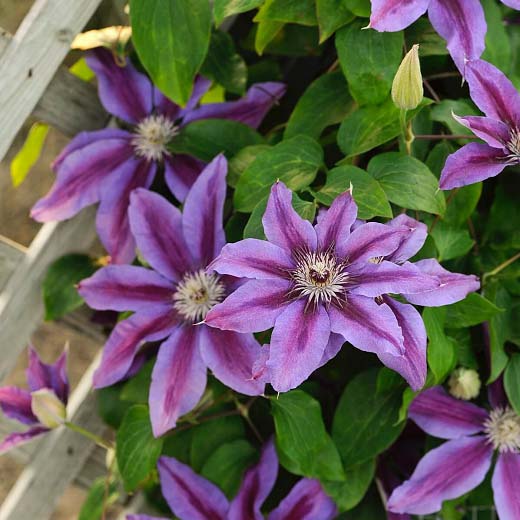
The fireworks clematis makes a big, bold statement with flowers that reach up to 8 inches in size.
Since the flowers grow on vines, they’re a great way to accent a fence, create a privacy screen with a trellis, or add color to a pergola.
The flowering season lasts from spring and well into summer, so you can enjoy the flowers for months.
- USDA Growing Zones: 4 to 8
- Color Varieties: Purple, Pink, White
- Sun Exposure: Full sun, Partial Sun
- Soil Needs: Moist but well-drained
12. Giant Water Lily (Nymphaeaceae Genera)
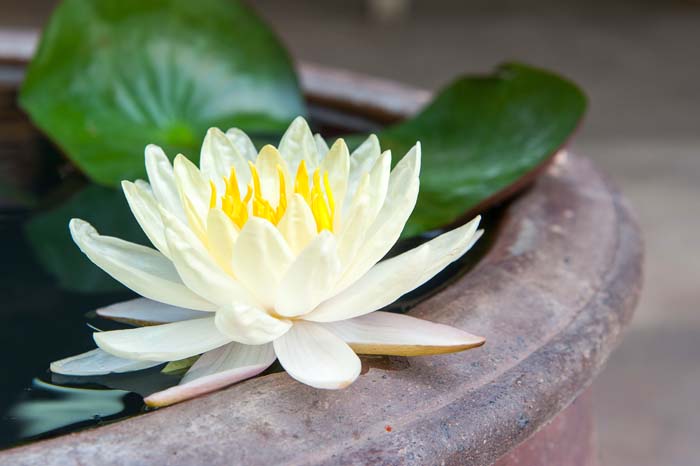
Do you have a pond or a water feature in your garden?
Take advantage of the moist environment and grow the giant water lily.
The enormous white flowers appear to rest on the surface of the water, but they’re only part of the experience — the lily also has massive leaves that grow to be 4-10 feet across.
- USDA Growing Zones: 10 to 11 (V. amazonica)
- Color Varieties: White to pink/purple
- Sun Exposure: Full sun
- Soil Needs: Submerged rich loam
13. Giant Zinnia ( Zinnia )
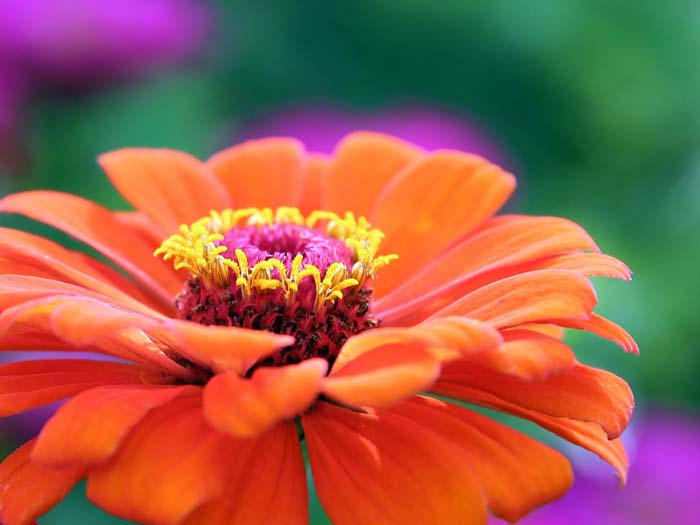
Bring a joyful feeling to your garden with the giant zinnia, which grows in a variety of bright, saturated colors.
This beautiful flower is famous for its small, rounded petals; they grow in tight, overlapping layers for a lush effect.
- USDA Growing Zones: True annual; grown in all zones
- Color Varieties: Red, yellow, orange, pink, rose, lavender, purple, green, white
- Sun Exposure: Full sun
- Soil Needs: Moist, well-drained soil
14. Hardy Hibiscus (Hibiscus moscheutos)
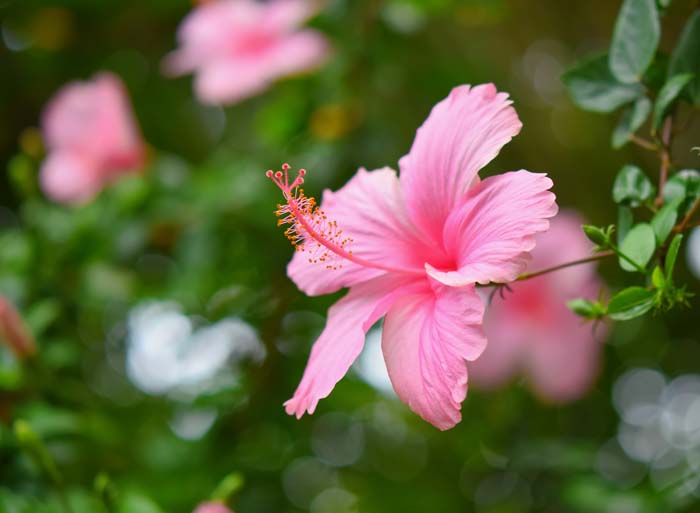
When you first see a hardy hibiscus plant, it’s hard to believe it’s real.
The blooms are so big that they seem to overpower the plant itself.
The result is thrilling, especially if your garden is in a high-visibility location. If you live in a region with cold winters, make sure to cover the bed when temperatures drop.
- USDA Growing Zones: 4 to 9
- Color Varieties: White, red, pink, blue
- Sun Exposure: Full sun
- Soil Needs: Well-drained loam
15. Hydrangea (Hydrangea spp.)
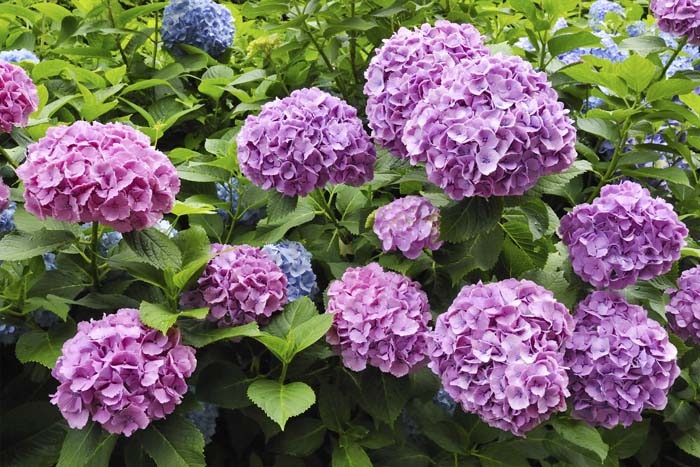
When you’re shopping for plants with large flowers, the hydrangea is sure to be at the top of the list.
This plant is famous for its huge clusters of flowers; each one can be up to 1 foot wide.
These big, puffy blooms can be heavy, so make sure to ask your local gardener about the variety that works best for local precipitation levels.
- USDA Growing Zones: 3 to 9 (depends on species)
- Color Varieties: Blue, pink, white, red, purple
- Sun Exposure: Full sun to part shade
- Soil Needs: Rich, porous, rich soil; pH can affect bloom color of some species
16. King Protea (Protea cynaroides)
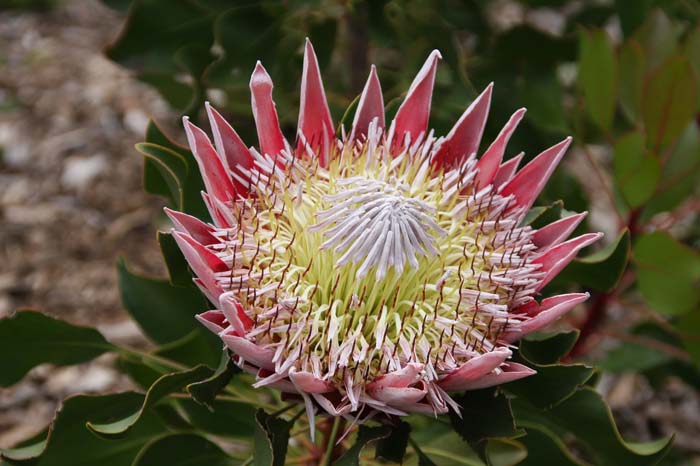
If you’ve never seen a king protea in person, you’re in for a treat.
With its wild, multi-layered design and spiky petals, this delightful flower looks like something from another planet.
It’s a tropical flower that prefers warm climates; when conditions are right, you can expect flowers that are nearly 12 inches in diameter.
- USDA Growing Zones: 9 to 12
- Color Varieties: Red, pink, creamy white
- Sun Exposure: Full sun
- Soil Needs: Average to rocky very well-drained soil; prefers acidic soil
17. Moonflower (Ipomoea alba)
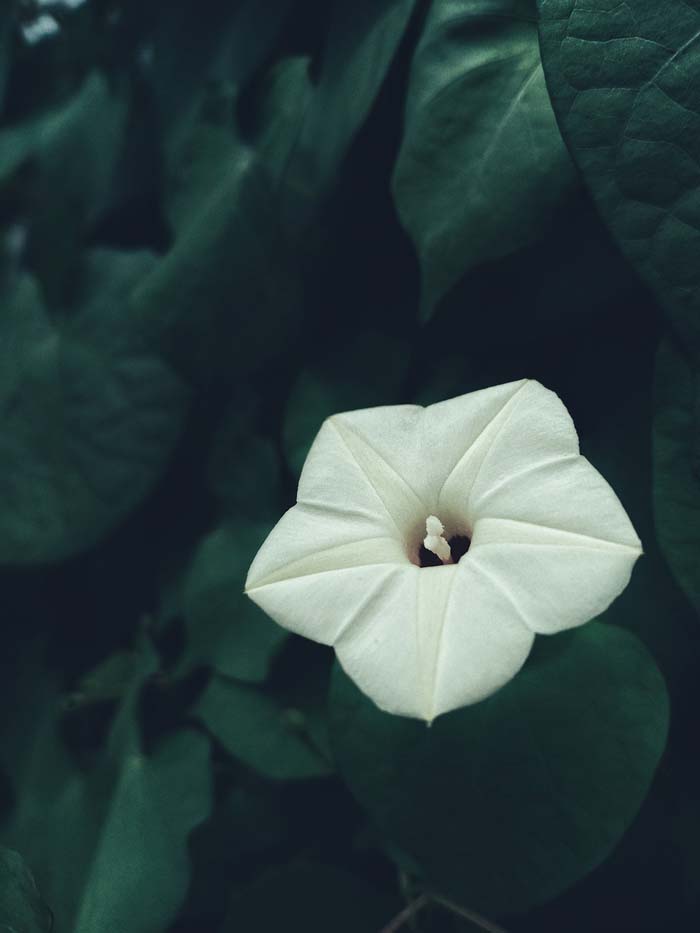
Do you like to spend time in your garden at the end of the day?
Maximize this magical time by planting the moonflower. True to its name, it blooms at dusk, rewarding you with large white flowers with near-perfect circular shapes.
Since this annual flower grows quickly, it’s a great way to start your garden.
- USDA Growing Zones: 10 to 12; usually grown as an annual
- Color Varieties: White, purple
- Sun Exposure: Full sun
- Soil Needs: Tolerates any soil type
18. Orienpet Lily (Lilium Hybrids)
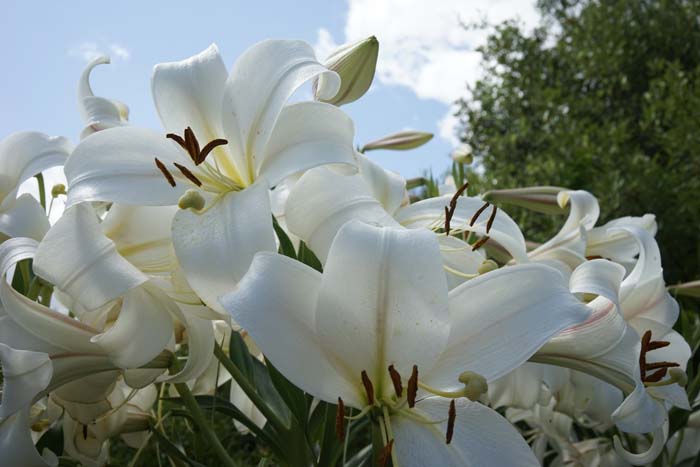
If you love the look of lilies, but you want something a bit bigger, check out the hybrid Orienpet lily.
Imagine a traditional lily flower, but supersized — the Orienpet blooms often measure 10 inches across.
They feature a distinct, pleasant fragrance that turns your garden into a multi-sensory experience. To encourage the largest blooms, make sure to add fertilizer.
- USDA Growing Zones: 4 to 8
- Color Varieties: White, yellow, pink, apricot, burgundy, red, and bi-colors
- Sun Exposure: Full sun to part shade
- Soil Needs: Medium-moisture, well-drained soil; thrives in slightly acidic soil
19. Oriental Poppy (Papaver orientale)
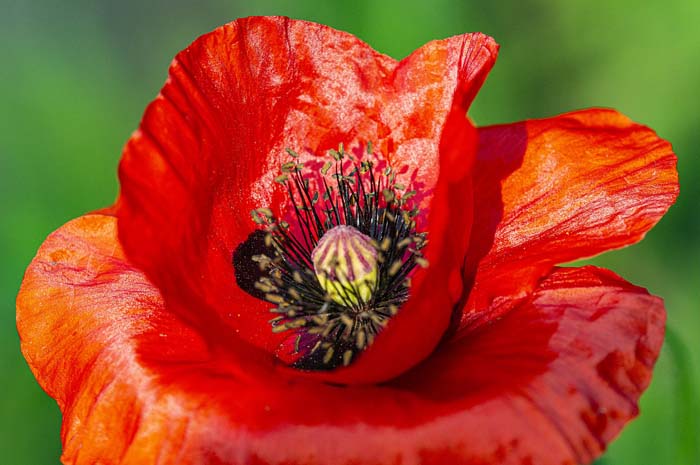
With its wild, brilliant color, the Oriental poppy brings a lively feeling to your garden.
In fact, when you take care of your plants and ensure that the soil is draining appropriately, the poppy plant will reward you with flowers that are bigger than your hand.
These flowers contrast dramatically with greenery, making them a great choice for a border garden along a fence or building.
- USDA Growing Zones: 3 to 9
- Color Varieties: Orange, red, pink, purple, white, peach, maroon, salmon
- Sun Exposure: Full sun
- Soil Needs: Fertile, well-drained soil with average moisture
20. Tree Peony (Paeonia suffruticosa)
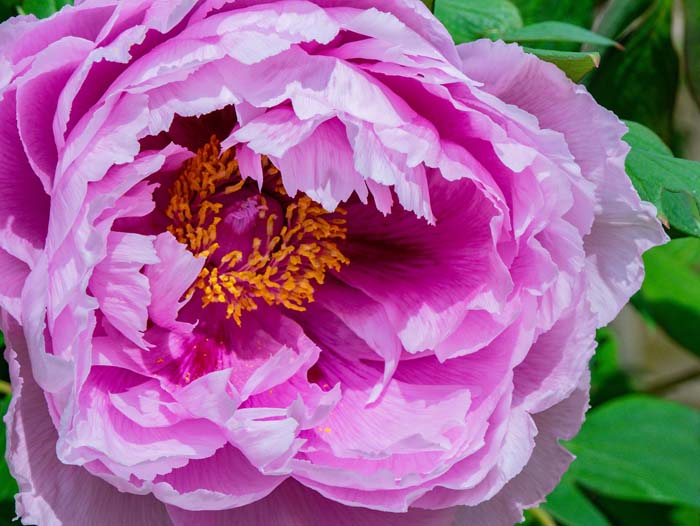
When it comes to high-impact plants, it’s hard to do better than the spectacular tree peony.
This stunning plant can create flowers that measure up to 9 or 10 inches in diameter!
These stunning, head-turning blooms appear in large quantities, turning the low-slung plants into a garden centerpiece that will make your yard the envy of the neighborhood.
- USDA Growing Zones: 4 to 8
- Color Varieties: White, red, pink, purple, yellow
- Sun Exposure: Full sun to part shade
- Soil Needs: Fertile loam

